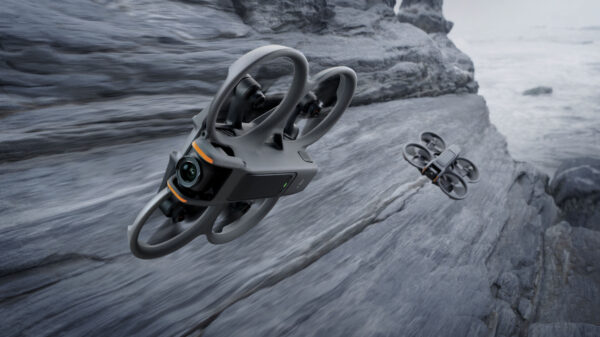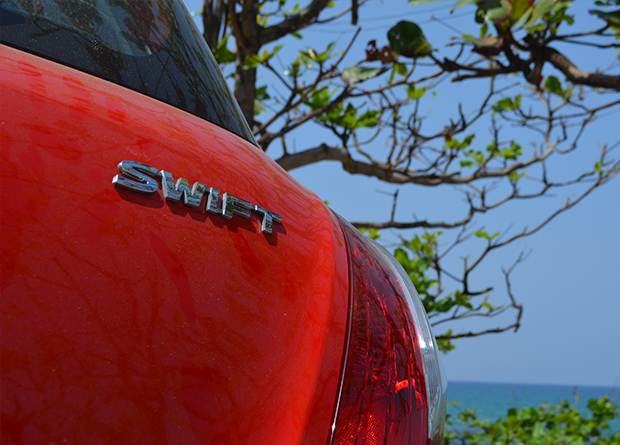First thought to come to mind when I first saw the Suzuki Celerio 1.0 CVT (unit for testing delivered at Axis Residences in Mandaluyong City): This is one small car. And this, of course, goes without saying, considering that this is a hatchback (HB), what is now a “regular”/“norm” as far as city driving is concerned.
Look-wise, the Celerio isn’t necessarily bad looking, even if it’s NOT a traffic-stopping beauty either. The front has sexy angles (i.e. “petite” comes to mind), complete with a grille (with the “S” logo) giving it some character. The back is boxy, perhaps as expected from a HB, even if it reminded me too much of the back of the not-that-sexy Toyota Wigo.
I only stand at 174 cms tall, but standing beside Celerio, I was already repeatedly told that the car wasn’t “bagay (Filipino word for ‘suitable’)” for me. It was, I was told, “too small a car (even if only in appearance) for big/somewhat big people” like me.
But the seeming smallness of the car is somewhat contradicted when you go inside, with lots of leg room for those in front (the driver included) and for three to even four (admittedly slim) passengers at the back. The headroom’s high, too. Inside the Celerio, it almost felt like being in a mini-sedan/sedan; even if you know that outside, you may appear like those clowns being stuffed in a mini car.
Inside, there are also some basics, including A/C, dual airbags, ABS, keyless entry, AM/FM radio, CD player, four speakers, USB/AUX input, and power windows, among others. Aside from the alloy wheels, a full-size spare wheel is under a trunk liner.
Now this may sound like I’m nitpicking, but Celerio doesn’t have the touchscreen capabilities of – say – Ciaz. Considering the growing dependence on Waze (and similar apps), this is immediately felt because of the need to use one’s phone/tablet for navigation, as opposed to a system that’s integrated in the car itself.
Typical of (many) HBs, Celerio’s back seats can be “folded” for conversion into more trunk space.
Performance-wise, Celerio isn’t a dynamo. But admittedly, the continuously variable transmission (CVT) helps – e.g. while traversing the (still largely undeveloped) hilly areas between Taytay, Rizal and Antipolo, acceleration was nippy. And those slopes (with lots of cracks on the road) in the vicinity of Robinson Forum (in Mandaluyong City)? Celerio was able to handle them well, too…
This is also an economic car – e.g. from full tank not even to nil, I’ve already covered way over 1,380kms, and already, I feel like I’ve been to the worst parts of Metro Manila. I have traversed not only EDSA (usually from Mandaluyong to Las Piñas, and vice versa), Ortigas Ave. Ext., Coastal/Alabang-Zapote Rd. and C5 (from Taguig to Las Piñas), but also Taytay in Rizal; Antipolo; and Biñan in Laguna. 10km/L to 12km/L was noted in heavy traffic; going up to around 20km/L in mixed driving.
One can really “feel” the compact size of Celerio when traversing rougher roads. I can’t complain about the steering, but braving humps/potholes meant actually “feeling” the car’s moves over them. On highways, then there’s that windy sound from outside too…
After all is said about Celerio (e.g. the somewhat cheap plastic dashboard, fabric seats that easily stain, lack of touchscreen capabilities as noted above, single internal light that makes looking for stuff particularly at the back in the dark difficult, and so on), one will almost always go back to its size. Because this is what, I daresay, makes this one worth considering, particularly if contemplating a car for the city.
One night, on my way from Mandaluyong City to Las Piñas, Waze led me along the (partial) informal settlement right beside Pasig River. And there, no matter how many times I blew my horn, so many people refused to budge; they’d just look over their shoulders, and then go on with whatever they’re doing (e.g. gossiping, drinking by the street, staying outside where it may be more airy, kids playing in the middle of the road, et cetera). The Celerio’s size was handy as it was able to fit the tight spots well.
City parking isn’t always painful – e.g. on-street parking of Makati is bearable. But there are places that make drivers think what the designers/those who constructed them were thinking, e.g. Cybergate (behind Robinson Forum in Mandaluyong) and Greenbelt. I had to park in these tight spots, and – Lo and behold! – Celerio fit snugly.
Now, don’t get me wrong about the (earlier seeming) finicky scrutiny of Celerio. Because at the end of the day, this one is more than just a capable car. It is sleek (particularly from the front); spacious; cost-effective re fuel consumption; and performs well enough. But – AGAIN – I’d have to add that on top of all these, Celerio is COMPACT. And these traits, when combined, do make for a car worth considering particularly by city dwellers.
SPECS:
Engine: 1.0-liter gasoline
Transmission: CVT
Power: 67hp @ 6,000rpm
Torque: 90Nm @ 3,500rpm
Drive layout: FWD
Seating: 5
Price: P542,000
Manual variant: P507,000












































































































